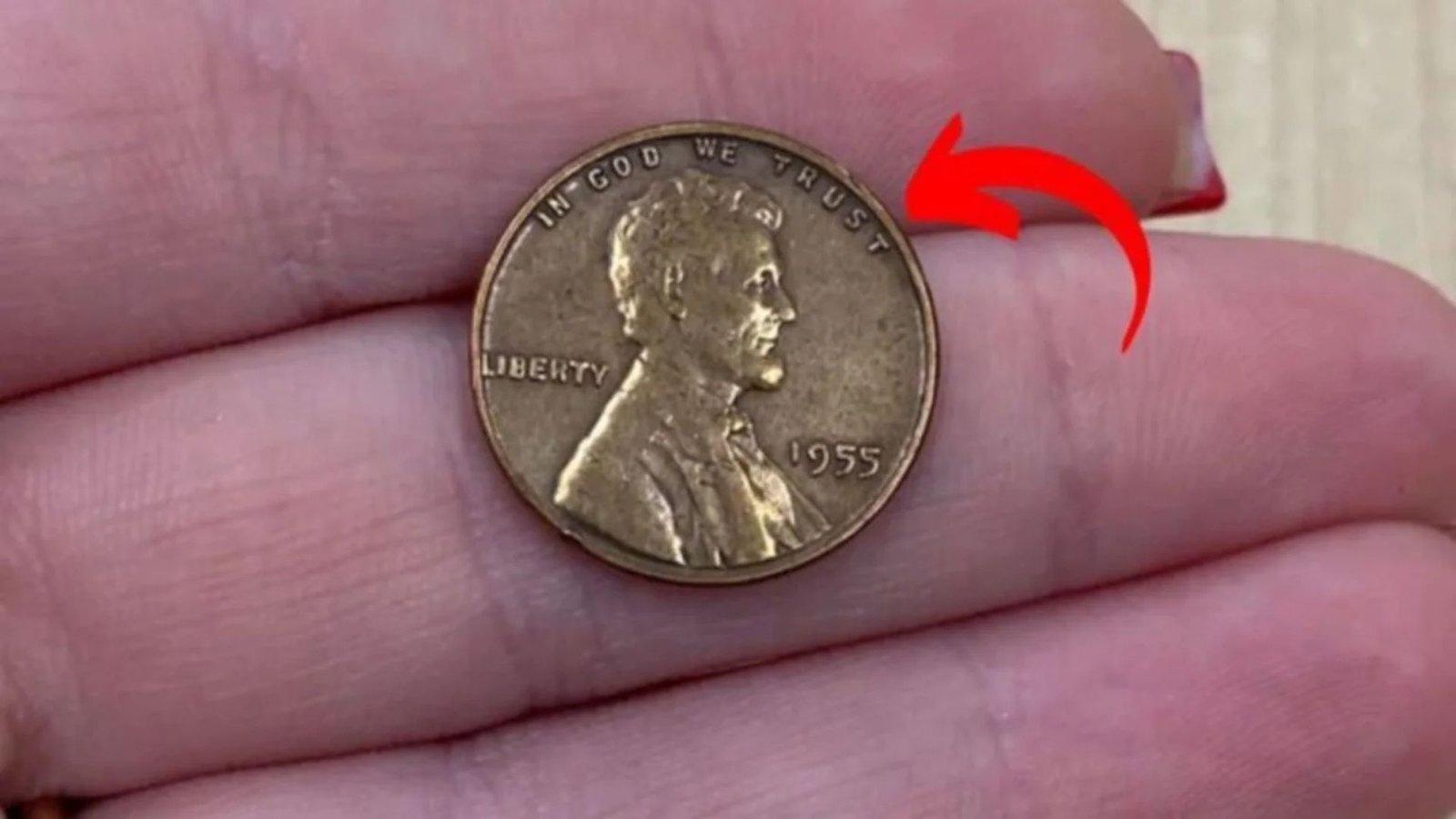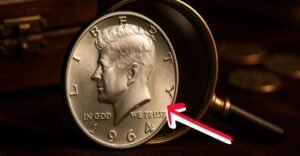Imagine digging through your old coin jar and pulling out a dusty old penny that’s worth more than a luxury car – or even a mansion! That’s the thrilling reality behind the Lincoln Wheat Penny, a tiny one-cent coin from the early 1900s that’s captured the hearts of collectors worldwide.
While most of these pennies are worth just a cent, a super-rare version from 1943, made of the wrong metal during World War II, recently skyrocketed to a jaw-dropping $3.6 million at auction. Yes, you read that right – a single penny could make you rich beyond your wildest dreams.
This isn’t just a tall tale; it’s a true story of history, mistakes, and hidden treasures still floating around in everyday circulation. In this in-depth guide, we’ll dive into the fascinating backstory of the Lincoln Wheat Penny, uncover why this $3.6 million gem is so special, and share expert tips on spotting one in your spare change.
Whether you’re a history buff, a treasure hunter, or just curious about the coins jingling in your pocket, keep reading to learn how these humble cents became symbols of fortune. Who knows? Your next handful of change might hold the key to life-changing wealth!
The Birth of the Iconic Lincoln Wheat Penny*: A Tribute to America’s Greatest President
The Lincoln Wheat Penny wasn’t born out of thin air – it was a deliberate nod to one of America’s most beloved leaders. In 1909, the U.S. Mint decided to redesign the one-cent coin to honor Abraham Lincoln on the 100th anniversary of his birth. Lincoln, the 16th president who led the nation through the Civil War and abolished slavery, seemed like the perfect figure to grace the nation’s smallest denomination.
President Theodore Roosevelt kicked things off by pushing for fresh, artistic designs on U.S. coins. He tapped talented sculptor Victor David Brenner to create the new look. On the front (or “heads” side), Brenner placed a simple yet powerful profile of Lincoln facing right, with the words “IN GOD WE TRUST” above his head and “LIBERTY” on the left. Below, you’ll find the year of minting.
But what really sets the Lincoln Wheat Penny apart is its back (or “tails” side). Brenner drew two tall stalks of wheat framing the words “ONE CENT” and “UNITED STATES OF AMERICA.” At the top, it reads “E PLURIBUS UNUM,” Latin for “out of many, one” – a reminder of America’s unity. This wheat design gave the coin its catchy nickname: the “Wheatie.” It symbolized the country’s agricultural roots and prosperity, making it a perfect fit for the early 20th century.
The first Lincoln Wheat Pennies rolled off the presses in August 1909, and they were an instant hit. Over the next 50 years, from 1909 to 1958, the Mint produced billions of them. Made mostly of copper (95% to be exact, mixed with a bit of tin and zinc), these pennies were tough, shiny, and easy to spot in your pocket. But not everything went smoothly – Brenner’s initials “V.D.B.” on the back caused a stir. Some folks thought it looked like an ad, so the Mint yanked them off in late 1909, only to sneak them back in tiny form on the front in 1918. Little did they know, these design tweaks would later turn some pennies into goldmines for collectors.
This classic look lasted until 1959, when the Mint switched to a Lincoln Memorial on the back to mark the 150th anniversary of Lincoln’s birth. Today, the Lincoln Wheat Penny remains a collector’s dream, evoking nostalgia for a simpler time when a penny bought a piece of candy.
World War II Chaos: How a Minting Mishap Created the World’s Most Valuable Penny
Fast-forward to 1943, and the world was at war. World War II raged on, and the U.S. needed every scrap of copper it could get for bullets, shells, and wiring. Pennies, which were normally copper-heavy, became a problem. To save metal for the troops, the Mint switched to zinc-coated steel for that year’s batch – cheap, lightweight, and perfect for the war effort. These “steel pennies” look silvery and magnetic, a stark contrast to the usual reddish copper glow.
Over 1 billion steel Lincoln Wheat Pennies were made in 1943 across the Philadelphia, Denver, and San Francisco Mints. They did the job, but they rusted easily and weren’t popular. What no one expected was a colossal blunder: a handful of pennies slipped through using leftover copper planchets (the blank metal discs used to strike coins). These “bronze” or “copper” 1943 pennies were errors – pure accidents in a high-stakes factory setting.
Why are they so rare? Experts believe only about 20 exist today across all three mints. The Philadelphia Mint’s 1943 copper penny is the rarest, with maybe just 1 or 2 known. The Denver version (marked with a “D”) has around 15 survivors, and San Francisco’s (with an “S”) has about 4. Each one tells a story of wartime frenzy, where workers rushed to meet quotas, and quality checks weren’t foolproof.
These mistakes weren’t caught until years later, when savvy collectors started spotting them. One famous tale involves a boy named Don Lutes Jr., who got a 1943 copper penny as change in 1947. He held onto it for decades, and it later fetched a fortune. Stories like his fuel the fire for “penny hunting” – scouring circulation for overlooked gems. In a world of mass production, these anomalies remind us that even in chaos, rarity is born.
The Big Reveal: Inside the $3.6 Million Lincoln Wheat Penny Auction That Shocked Collectors
Now, let’s talk numbers – the kind that make headlines. In a blockbuster auction in late 2024, a pristine 1943-D Lincoln Wheat Penny (struck at the Denver Mint) hammered down for an astonishing $3.6 million. This wasn’t just any sale; it was a record-breaker, drawing bids from around the globe via a top auction house like Heritage Auctions.
What made this penny so pricey? Condition is king in coin collecting. Graded MS-67+ RD by the Professional Coin Grading Service (PCGS) – that’s “Mint State” with near-perfect red luster – it was a time capsule. No scratches, no wear, just gleaming copper from 81 years ago. The “D” mint mark added exclusivity, as Denver errors are slightly more common but still ultra-rare.
This sale topped previous records. Back in 2010, another 1943-D sold for $1.7 million. A Philadelphia version fetched $1.38 million in 1996. But inflation, growing collector demand, and the thrill of wartime history pushed this one to new heights. The buyer? An anonymous investor who sees these coins as tangible pieces of American heritage.
Fun fact: Even “lesser” versions can fetch big bucks. A circulated 1943 copper penny might go for $100,000, while steel ones are just a few bucks. This $3.6 million star proves that in numismatics (that’s the fancy word for coin collecting), one tiny flaw can equal massive fortune.
Key Dates and Values: Your Cheat Sheet to Spotting Valuable Lincoln Wheat Pennies
Not every Lincoln Wheat Penny is a millionaire-maker, but certain dates and errors can turn pocket change into profit. Rarity drives value – low mintage numbers mean fewer coins survived wear, hoarding, or melting. Below is a handy table of the top Lincoln Wheat Penny key dates, based on recent market data from sources like PCGS and auction records. Values are estimates for coins in good (circulated) to excellent (mint state) condition. Remember, get your finds professionally graded for the real scoop!
| Year & Mint Mark | Why It’s Rare | Circulated Value | Mint State Value | Record Auction Sale |
|---|---|---|---|---|
| 1909-S VDB (San Francisco) | First year with designer’s initials; only 484,000 minted | $800–$2,000 | $5,000–$100,000+ | $168,000 (2018) |
| 1914-D (Denver) | Super low mintage of 1.2 million; high demand | $150–$500 | $2,000–$20,000 | $149,500 (2020) |
| 1922 No D (Philadelphia) | Missing mint mark due to die wear; about 500,000 estimated | $500–$1,500 | $10,000–$50,000 | $33,000 (2022) |
| 1931-S (San Francisco) | Mintage under 866,000; Depression-era scarcity | $50–$200 | $500–$5,000 | $7,500 (2023) |
| 1943 Bronze (All Mints) | WWII copper error; only ~20 known total | $10,000–$50,000 | $500,000–$3.6M+ | $3.6M (2024, Denver) |
| 1955 Doubled Die (Philadelphia) | Dramatic doubling on letters; ~20,000 made | $1,000–$3,000 | $10,000–$125,000 | $124,000 (2007) |
This table highlights just a fraction of the excitement – there are over 50 key dates in the series! Pro tip: Look for off-center strikes, weak stamps, or doubled features on any Wheatie dated 1909–1958.
Hunt for Treasures: How to Find a Rare Lincoln Wheat Penny in Circulation Today
Believe it or not, rare Lincoln Wheat Pennies are still out there, tucked in grandma’s cookie jar or spat out by a vending machine. With billions minted, many survive in attics and bank rolls. Here’s your step-by-step guide to becoming a penny pro:
Step 1: Know What to Look For
Start simple: Any penny dated 1958 or earlier is a Lincoln Wheat Penny. Check the back for those wheat stalks – if it’s a building (Lincoln Memorial), it’s from 1959 onward and less valuable. Focus on pre-1920 coins for big potential.
Step 2: Inspect for Errors and Condition
Use a magnifying glass or phone app to scan for:
- Mint marks: Tiny “D” (Denver), “S” (San Francisco), or none (Philadelphia) below the date.
- Color and shine: Red copper is best; brown is okay, but avoid green (that’s corrosion).
- Flaws: Doubled letters, missing details, or unusual weight (copper feels heavier than steel).
The 1943 steel pennies are common, but flip one – if it’s reddish-brown, scream for joy! It’s likely the $3.6 million cousin.
Step 3: Where to Hunt
- Your pockets: Empty that change dish daily.
- Banks: Buy penny rolls for $0.50 each – pure goldmine potential.
- Estate sales and flea markets: Old jars often hide winners.
- Online communities: Join forums like Reddit’s r/coins to share finds.
Step 4: Get It Checked
Don’t sell yet! Take suspects to a local coin shop or submit to PCGS/NGC for grading. It costs $20–$50 but protects against fakes. Counterfeits are rampant, especially for WWII errors.
With patience, anyone can strike it rich. In 2023 alone, amateur hunters found doubled-die pennies worth $5,000 in thrift store hauls.
Why Lincoln Wheat Pennies Still Captivate Us: Legacy of a Coin That Changed Everything
The Lincoln Wheat Penny isn’t just money – it’s a time machine. It witnessed the Roaring Twenties, the Great Depression, two world wars, and the Space Age. For collectors, it’s about more than value; it’s connecting with history through something small enough to hold in your palm. The $3.6 million sale reminds us that fortune favors the curious – and that even mistakes can become masterpieces.
As copper prices rise and nostalgia booms, Lincoln Wheat Penny values keep climbing. Whether you’re chasing that elusive 1943 bronze beauty or building a full set, the thrill is in the hunt. So, next time you spot a Wheatie in the wild, pause and polish it up. Your pocket change might just rewrite your financial future!
Ready to start? Grab a coin album and dive in. Who knows – the next big auction headline could feature your Lincoln Wheat Penny. Happy hunting!




